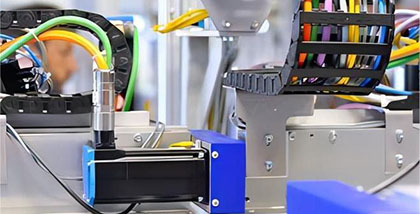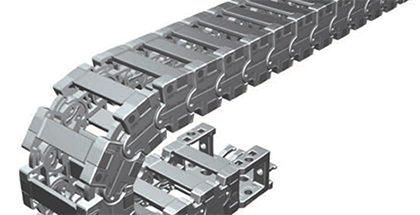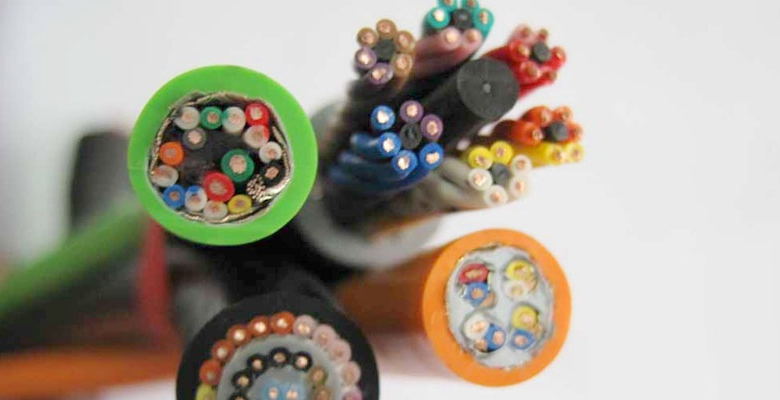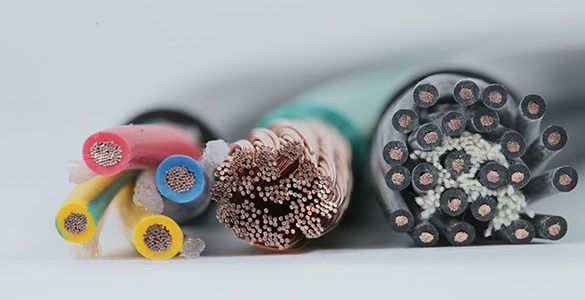There must be something you don't know about wires and cables here
Precis
For beginners, it is always a bit silly to distinguish between wires and cables. Wires refer to wires that conduct current, which can effectively conduct current and are the carriers used for conducting electrical energy. Cable is a wire product used to transmit (magnetic) energy, information, and achieve electromagnetic energy conversion.
What is the difference between the two? What are the types of wires and cables? Where are they all applied? This editor takes you into the world of wires and cables.
What is the difference between wires and cables?

1. A wire is composed of one or several flexible wires, wrapped in a light and soft protective layer; A cable is composed of one or several insulated wires wrapped in a tough outer layer of metal or rubber. Cables and wires are generally composed of three parts: core wire, insulation sheath, and protective sheath. In fact, there is no strict boundary between "wires" and "cables". Products with fewer cores, smaller product diameters, and simpler structures are usually referred to as wires, those without insulation are referred to as bare wires, and others are referred to as cables. The wire with a larger cross-sectional area (greater than 6 square millimeters) is called a large wire, the wire with a smaller cross-sectional area (less than or equal to 6 square millimeters) is called a small wire, and the insulated wire is also called a cloth wire.
2. Cables generally have more than 2 layers of insulation, most of which are multi-core structures and are wound on cable reels, with a length generally greater than 100 meters. Electric wires are generally single-layer insulated, single core, rolled up to 100 meters in a coil, and wireless.
3. The smaller diameter is called a "line"; The larger diameter is called a "cable".
4. The simple structure is called "line"; A complex structure is called a "cable".
But with the expansion of its scope of use, many varieties of "cable in cable" and "cable in cable". So there is no need to strictly distinguish. In daily habits, people refer to household cloth wires as wires and power cables as cables.
What types of wires are there? Where are they all applied?
1. BLX and BLV types: Aluminum core wires, due to their lightweight, are commonly used for overhead lines, especially long-distance transmission lines.
2. BX type and BV type: Copper core wires are widely used in mechanical and electrical engineering, suitable for fixed laying of power devices up to 450/750V. However, due to the complex production process of rubber insulated wire BX type compared to polyvinyl chloride insulated wire BV type, and certain chemical components in rubber insulated insulation can have chemical effects on copper, although this effect is slight, it is still a defect, So in mechanical and electrical engineering, it is basically replaced by PVC insulated wire BV type.
3. RV and RX types: Copper core flexible wires are mainly used in movable parts that require flexible connections. RV type is suitable for household appliances, small electric tools, instruments and meters with a voltage of 450/750V and below. The allowable working temperature for a long time should not exceed 65 ° C. The RX type is suitable for indoor lighting fixtures, household appliances, and tools up to 300/500V, and the allowable working temperature should not exceed 70 ° C.
4. BVV type: A multi-core flat or circular plastic wire that can be used for wiring in electrical equipment. It is more commonly used for fixed wiring in household appliances, but the model is not BVV hard wire used in conventional circuits, but RW, which is a copper core plastic insulated plastic sheathed multi-core flexible wire. For example, general household and office lighting typically uses BV or BX type PVC insulated or rubber insulated copper core wires as power connection wires; The connection between the welding machine and the welding clamp in the mechanical and electrical engineering site often uses RV type polyvinyl chloride insulated copper core flexible wires, because the welding position is not fixed and moves frequently.
What types of cables are there? Where are they all applied?
1. VV type, YJV type: PVC type power cables, cross-linked polyethylene type power cables, cannot be subjected to mechanical external forces, and are suitable for indoor and tunnel cable trays and pipeline laying. For example, the cross Huangpu River power cable laid in the Dalian Road Tunnel in Pudong New Area uses YJV type copper core cross-linked polyethylene insulated PVC sheathed cable, as the cable is not subjected to mechanical external forces and does not require to withstand large tensile forces in the tunnel.
2. VV22 and YJV22 types: Inner steel strip armored power cables can withstand certain mechanical external forces, but cannot withstand large tensile forces. The cross-linked polyethylene insulated power cable YJV22 has a long-term maximum allowable temperature of 90 ° C, higher aging resistance and environmental resistance than the polyvinyl chloride insulated cable VV22, and is lightweight, simple in structure, convenient in use, and not limited by drop in laying. For example, in high-rise buildings, hospitals, subways, nuclear power plants, power plants, mines, petroleum, chemical industries, etc., laid indoors, in tunnels, cable trenches, and directly buried underground.
3. ZR-YJFE type, NH-YJFE type: flame-retardant, fire-resistant and other special radiation cross-linked power cables, with a maximum long-term allowable working temperature of 125 ° C, can be laid in suspended ceilings and cable shafts in high-rise buildings, and is suitable for damp places. Flame retardant cables should have flame retardant properties. In order to extinguish, reduce, or suppress the combustion of materials, 11 commonly used materials and engineering equipment need to be added to the materials or treated. Flame retardants are usually added to the materials to prevent or delay flame spread during combustion. It burns on an open flame and automatically extinguishes after leaving the fire for a period of time. There are currently four levels: A, B, C, and D, with C level commonly used.
The characteristic of fire-resistant cables is that they still have the ability to transmit electricity during or even after combustion, and are often used in relatively important working environments, such as on warships. Fire-retardant cables can have flame retardant properties at the same time, but flame-retardant cables do not have flame retardant properties.


 JD
JD Tmall
Tmall Alibaba
Alibaba








